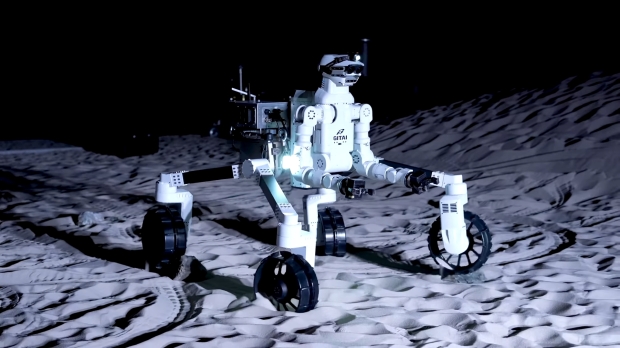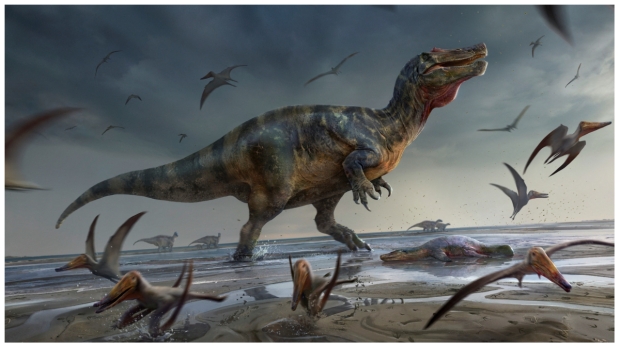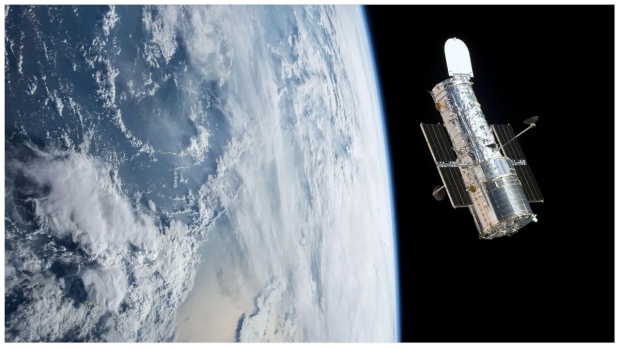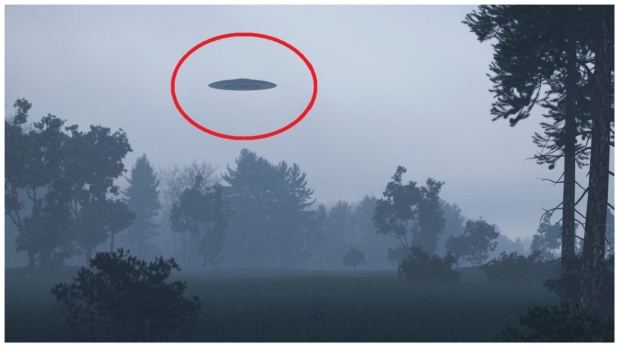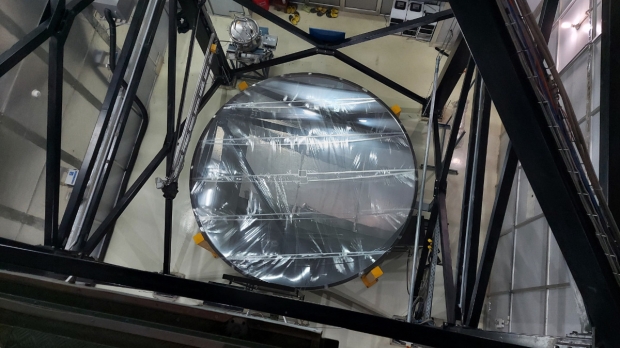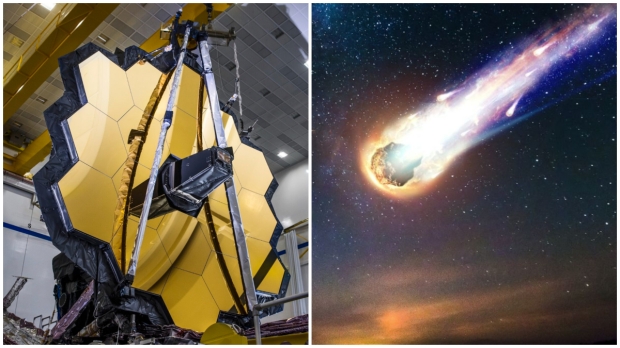Science, Space, Health & Robotics News - Page 134
Video shows off new centaur-like robotic lunar rover in action
The new robotic lunar rover has a humanoid upper body and four wheeled legs, resembling a centaur from Greek mythology, a creature with a human upper body and the lower body of a horse.
The lunar rover is called the R1 robot and was developed by GITAI, a space robotics startup, in partnership with Japan's space agency, JAXA. The R1 has two arms with articulating claws for hands, cameras on its head that resemble eyes, and each of its four wheels can rotate independently with complete 360-degree freedom.
During a test at a JAXA facility, the R1 traversed uneven terrain peppered with rocks, designed to simulate a lunar environment. The rover also showed off various locomotion maneuvers, and a later test showed an operator controlling the robot with a virtual reality (VR) headset and handheld controls.
Continue reading: Video shows off new centaur-like robotic lunar rover in action (full post)
Largest meat-eating dinosaur in Europe found, says scientists
Researchers have reported the discovery of the largest meat-eating dinosaur to ever roam Europe called the "White Rock spinosaurid".
A new study published in the journal PeerJ Life & Environment details the discovery of fossils from the dinosaur that is expected to have lived approximately 125 million years ago during the Cretaceous Period. The fossils that were found include a back, hip, and tail bones with some additional limb fragments. The fossils were found along Compton Bay, located on the southwest coast of the Isle of Wight.
According to the researchers, the White Rock spinosaurid is, at the very least, "one of the biggest - and possibly the biggest - known land predator ever to stalk Europe," said Chris Barker, a University of Southampton doctoral student in paleontology and the lead author of the new paper. Notably, paleontologists estimate that the dinosaur was about 32 feet long but could have possibly been even bigger. For reference, the Tyrannosaurus rex was close to 42 feet long.
Continue reading: Largest meat-eating dinosaur in Europe found, says scientists (full post)
Hubble photographs a galactic tail 260,000 light years long
NASA has taken to its Hubble Space Telescope Twitter account to tease upcoming research that will be conducted by the James Webb Space Telescope.
NASA explains in the above post that its Hubble Space Telescope snapped a photograph of the galaxy ESO 137-001, which resides in the constellation Triangulum Australe and in the cluster Abell 3627. NASA explains that ESO 137-001 is slowly plunging into a galaxy cluster that is causing it to be stripped of hot gas, which creates a galactic tail that stretches some 260,000 light years.
Notably, when observed in visible light, the galaxy looks like a "jellyfish" with large blue ribbons of young stars forming the legs of the aquatic animal. Furthermore, NASA explains that once Webb is fully calibrated and operational, the next-generation space telescope will be pointed at ESO 137-001 to study this strange galaxy and how stars are forming in the galactic tail. To read more on this galaxy from NASA, check out this link here.
Continue reading: Hubble photographs a galactic tail 260,000 light years long (full post)
Scientists have created 'living' skin for robots that can heal
Researchers have created artificial "living" skin constructed out of human cells that is capable of healing itself.
A team of researchers has moved the scientific needle forward with the development of artificial living skin that is designed to give robots the look and touch of living creatures. As explained in the above/below video and in the researcher's paper penned in the journal Cell, the scientists from the University of Tokyo designed skin that molded itself to a robotic finger as it's very difficult to cut and glue skin onto the device manually.
The team explains that they dipped the robotic finger into a solution that consists of collagen and dermal fibroblast, which are cells that create proteins that basically form the structure and connectivity of human skin. The team then added epidermal cells, which are the main cells found on the outer layer of skin, and as explained by ScienceAlert, without these cells, the skin wouldn't repel water.
Continue reading: Scientists have created 'living' skin for robots that can heal (full post)
NASA announces new hallmark investigation into UFOs and their origins
NASA has announced that it will be launching a new study that will investigate UFO sightings and how scientists can develop a deeper understanding of the phenomenon.
On Thursday, NASA announced that it will be recruiting several high-ranking scientists to lead the project, which will analyze already obtained data of the mysterious events and, hopefully, provide the agency with a deeper understanding of the phenomena. Notably, the agency intends that the project will inform NASA on how to gather data on UFOs in the future.
NASA now joins the list of US government bodies that have taken on the responsibility of demystifying the UFO topic. Congress recently shined a light on UFOs by hosting a public hearing last month where the Pentagon announced it has encountered nearly 400 UFOs. Additionally, NASA has stated that its newly announced project will also focus on mitigating UFOs, citing a part of the mission is to develop new safety measures for aircrafts.
Continue reading: NASA announces new hallmark investigation into UFOs and their origins (full post)
WHO warns of 'real' monkeypox risk, cases hit 1,000+ over 29 countries
The United Nations' World Health Organization (WHO) has warned of the risk of monkeypox becoming established in new countries.
The monkeypox virus is endemic to Africa, meaning it can resurface often. However, since about May 17th of this year, cases of the rare virus have begun appearing across Europe, and outbreaks have occurred in the U.S., Australia, Canada, and other countries. The total number of cases has surpassed a thousand, though no deaths have been reported so far as a result.
"The risk of monkeypox becoming established in non-endemic countries is real. More than 1,000 confirmed cases of monkeypox have now been reported to WHO from 29 countries that are not endemic for the disease," said World Health Organization chief Tedros Adhanom Ghebreyesus during a press conference.
Continue reading: WHO warns of 'real' monkeypox risk, cases hit 1,000+ over 29 countries (full post)
Twitter has said it will comply with Elon Musk's big data demands
A new report from the Washington Post has revealed that Twitter's board will go along with the demands made by Elon Musk to investigate the platform's true number of bot accounts.
The new report from WAPO has revealed that the board will give Musk the full "firehose" of data that consists of more than 500 million tweets posted each day, according to an individual close to the matter who discussed it with WAPO under the condition of remaining anonymous. The spotlight on Twitter's userbase and its percentage of fake accounts came under fire when Musk announced that the deal to purchase the platform for $44 billion was on hold until Twitter could prove that less than 5% of total users on Twitter are bots.
The individual who spoke to WAPO said that the "firehose" of data is already being accessed by approximately 24 different companies, who pay for access to the pool so they can see a real-time record of tweets, what devices those tweets came from, and information about the account that wrote the tweet. If Musk gets access to Twitter's data stream and is able to prove the platform has more spam accounts than what Twitter has previously stated, it may be enough grounds for Musk to renegotiate the agreed-upon price.
Continue reading: Twitter has said it will comply with Elon Musk's big data demands (full post)
Microplastics have been detected in Antarctic snow for the first time
A study on the microplastics discovered titled "First evidence of microplastics in Antarctic snow" has been published in the journal The Cryosphere.
Researchers from the University of Canterbury have uncovered microplastics in fresh snow in Antarctica that was collected in late 2019. Research on microplastics has shown their negative impact on the health of environments due to limiting the growth and reproduction of organisms, and their general biological functions, including those in humans.
"It's incredibly sad but finding microplastics in fresh Antarctic snow highlights the extent of plastic pollution into even the most remote regions of the world. We collected snow samples from 19 sites across the Ross Island region of Antarctica and found microplastics in all of these," said Alex Aves from the University of Canterbury.
Continue reading: Microplastics have been detected in Antarctic snow for the first time (full post)
One-of-a-kind 'liquid telescope' is now operational in the Himalayas
A brand new telescope in the Indian Himalayas has been commissioned at the Devasthal Observatory campus of Aryabhatta Research Institute of Observational Sciences (ARIES).
The telescope is known as the International Liquid-Mirror Telescope (ILMT) and is "the first liquid-mirror telescope designed exclusively for astronomical observations." It joins another four-meter class telescope at the observatory, the Devasthal Optical Telescope (DOT), which are both the largest aperture telescopes in the country.
The telescope was built by Indian, Belgian, and Canadian astronomers and employs a 4-meter (13.1 feet) diameter rotating mirror made up of liquid mercury. Mercury is a reflective liquid, which the astronomers laid in a thin film and curved into a parabolic shape, allowing it to focus light. The mercury is protected from the wind by a thin transparent film of mylar.
Continue reading: One-of-a-kind 'liquid telescope' is now operational in the Himalayas (full post)
NASA confirms a meteorite collided with the James Webb Space Telescope
NASA has taken to its blog to announce that its James Webb Space Telescope has been struck by a micrometeorite.
The space agency recently published a report that states Webb was struck by a micrometeorite between May 23 and May 25. The micrometeorite struck Webb's primary mirror, and NASA has said that the telescope is still performing at a level that is beyond its intended mission requirements despite there being a "detectable effect in data". Notably, NASA writes that micrometeorite impacts are an "unavoidable aspect of operating any spacecraft" and that Webb engineers anticipated that impacts such as these would be common.
Engineers behind Webb constructed the next-generation space telescope to be capable of withstanding micrometeorite impacts. However, the micrometeorite that recently impacted Webb was larger than what was simulated on Earth, and over the course of Webb's life, it will undoubtedly continue to be hit with micrometeorites that will "gracefully degrade telescope performance," according to Lee Feinberg, Webb optical telescope element manager at NASA Goddard.
Continue reading: NASA confirms a meteorite collided with the James Webb Space Telescope (full post)


